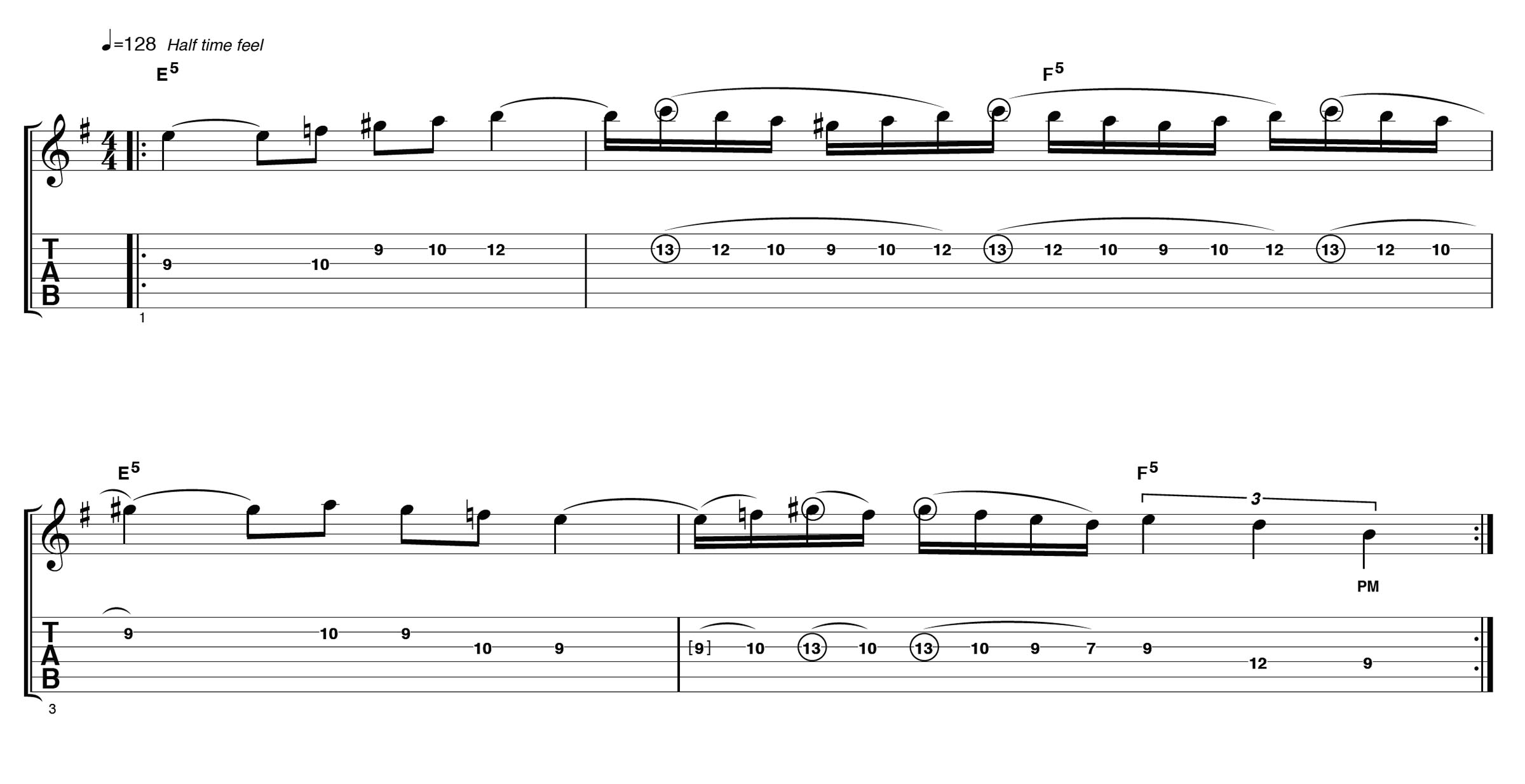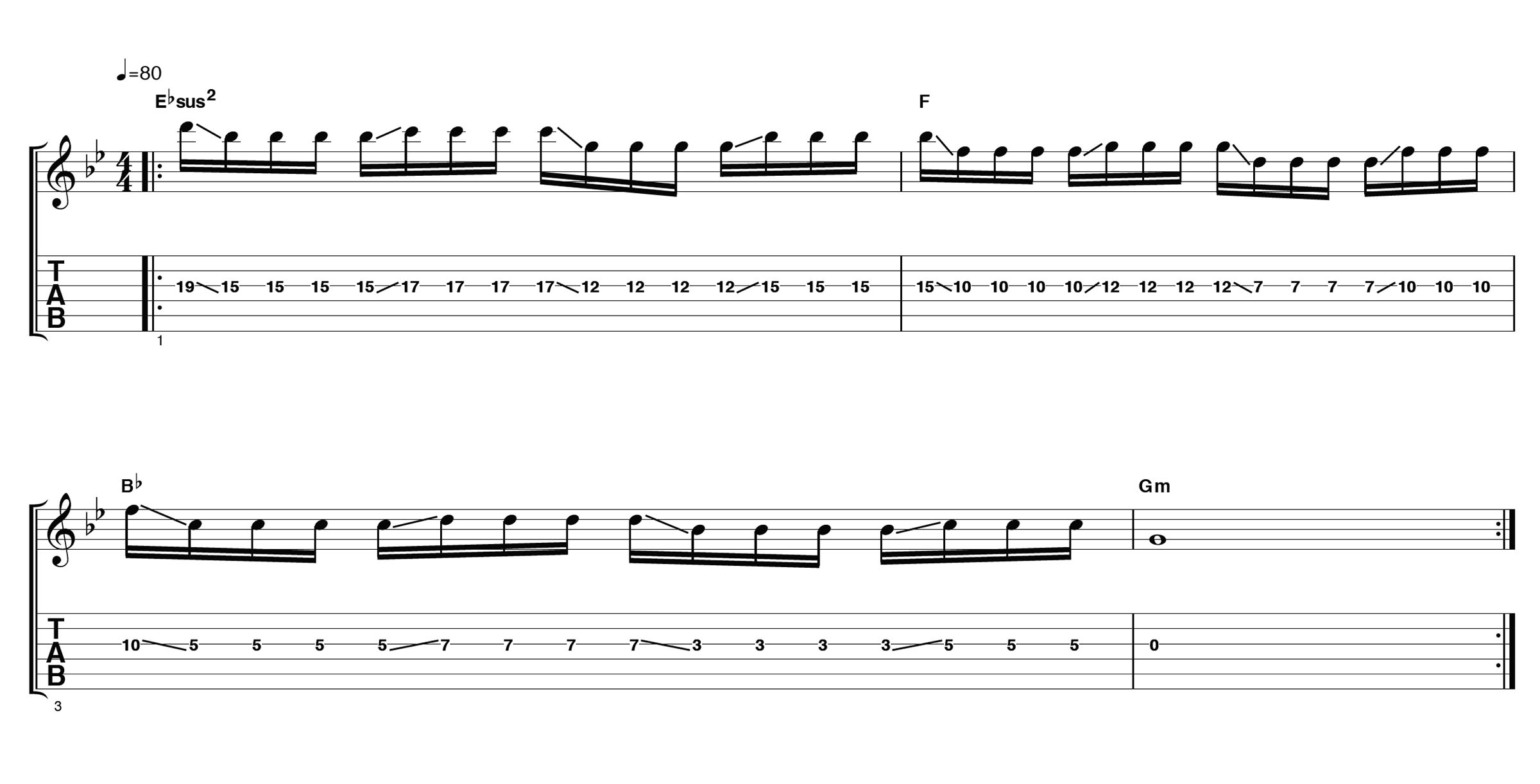Take your guitar solos to the next level with these genre-spanning tips
Soloing ideas for lead guitar in rock, blues, acoustic, metal and more to make you a better player now

As guitarists, we’ve all been in a situation where we know what’s coming up but our minds go blank, and this probably applies to soloing above most other musical situations. So here we’re turning our attention to just that: soloing skills.
If it sounds intimidating, don’t let it. This isn’t an out-and-out shredfest. Instead, we want to give you the catalyst you need to approach taking a solo with confidence. We’re looking at a few different styles of music, and identifying some strategies you can adopt for each.
Of course, the truth is that each strategy can be applied to almost any style of music, which means there are endless possibilities here. Plug in and rock out with our tab lessons and backing tracks.
Example 1. Blues: Easy pentatonics

This Eric Clapton-style line is derived from the G minor pentatonic scale (G Bb C D F), using quarter-tone and whole-tone bends through a thick overdriven tone.
Notice how the lick can be repeated over the I and IV chords of a I-IV-V blues chord progression; that’s G-C-D in the key of G.
Example 2. Blues-rock: Mixolydian/minor pentatonic mix

This Free- and AC/DC-inspired lick kicks off in the A Mixolydian mode (A B C# D E F# G) before switching to the noticeably moodier A minor pentatonic scale (A C D E G). This five-note scale comes from the more substantial A natural minor scale (A B C D E F G). Compare this with the Mixolydian mode to see which notes are different.
Example 3. NWOBHM: Phrygian mode

Inspired by the heavy metal of the late ’70s/early ’80s, this Phrygian line uses a touch of finger vibrato and palm-muting to embellish what is actually quite a simple line. It’s easy to play this kind of line faster, or add more notes, but does it add intensity? You decide...
Example 4. Power-metal ballad: Slow tapping

It’s easy for a lead line to sound small against the backdrop of huge drums and rhythm guitars, but a little more midrange and a few more notes help this lick stand out. Bars 2 and 4 feature tapping in a relatively slow, controlled way. Once you’ve mastered this, its a breeze to speed things up for most impressive results.
Example 5. Americana: 6th intervals

This clean-tone lick mixes simultaneous and staggered 6th intervals to create a melody that suits the Americana-styled backing track better than more conventional rock or blues soloing.
Try different pickup selections and a splash of reverb and you’re ready to go. Bernie Leadon of the Eagles had a nice touch with this kind of soloing.
Example 6. Acoustic rock: Mixolydian over a V-IV-I progression

This line shows just how good the Mixolydian mode can sound over a basic V-IV-I chord progression (D-C-G here). The major scale sometimes sounds too bright, too happy and just not moody enough. The recurring C note lends a note of tension, acting as a b7 over the D major root chord and as an 11th over the G.
Example 7. Melodic rock: Arpeggio/scale mixture

Here, we use a G major arpeggio (G-B-D) to ascend, before fleshing it out into a scale run (again, G major: G A B C D E F#) on the descent. This highlights the ‘chord within a scale’ principle, whereby you pick out the notes of a chord from a parent scale. Note how the simple rhythm contrasts with the more complex stop/start of the backing track.
Example 8. Rock ballad: One-string lick

Using only the third string, this one-finger idea strips away all the habitual scale shapes that can actually stand between us and melodic invention. You may find you want to cross to other strings and blend in a little traditional ‘position’ playing. Try the G minor pentatonic scale (G Bb C D F) in 3rd position for this.
Get The Pick Newsletter
All the latest guitar news, interviews, lessons, reviews, deals and more, direct to your inbox!
As well as a longtime contributor to Guitarist and Guitar Techniques, Richard is Tony Hadley’s longstanding guitarist, and has worked with everyone from Roger Daltrey to Ronan Keating.
“There are so many sounds to be discovered when you get away from using a pick”: Jared James Nichols shows you how to add “snap, crackle and pop” to your playing with banjo rolls and string snaps
Don't let chord inversions bamboozle you. It's simply the case of shuffling the notes around








![Joe Bonamassa [left] wears a deep blue suit and polka-dotted shirt and plays his green refin Strat; the late Irish blues legend Rory Gallagher [right] screams and inflicts some punishment on his heavily worn number one Stratocaster.](https://cdn.mos.cms.futurecdn.net/cw28h7UBcTVfTLs7p7eiLe.jpg)


